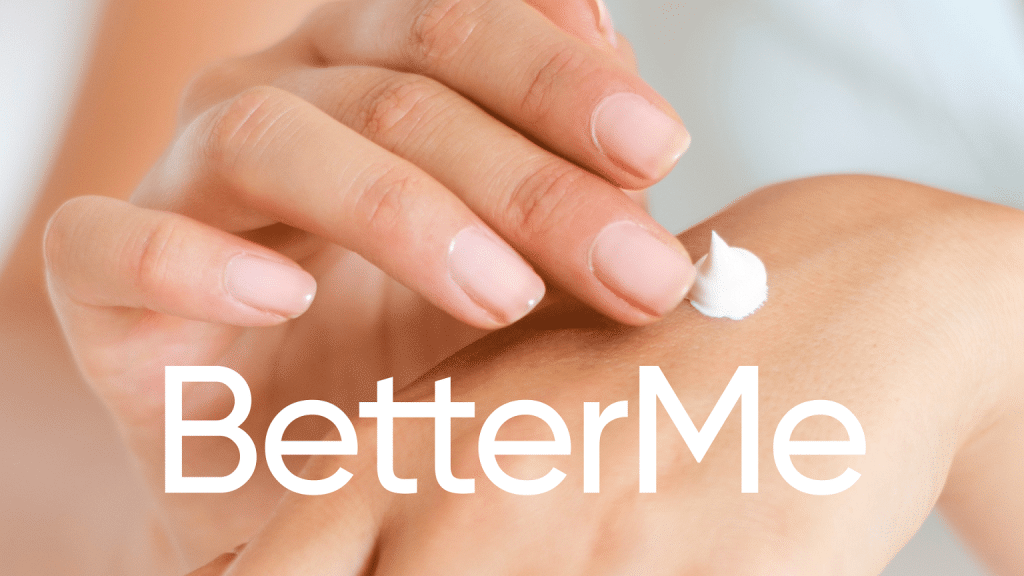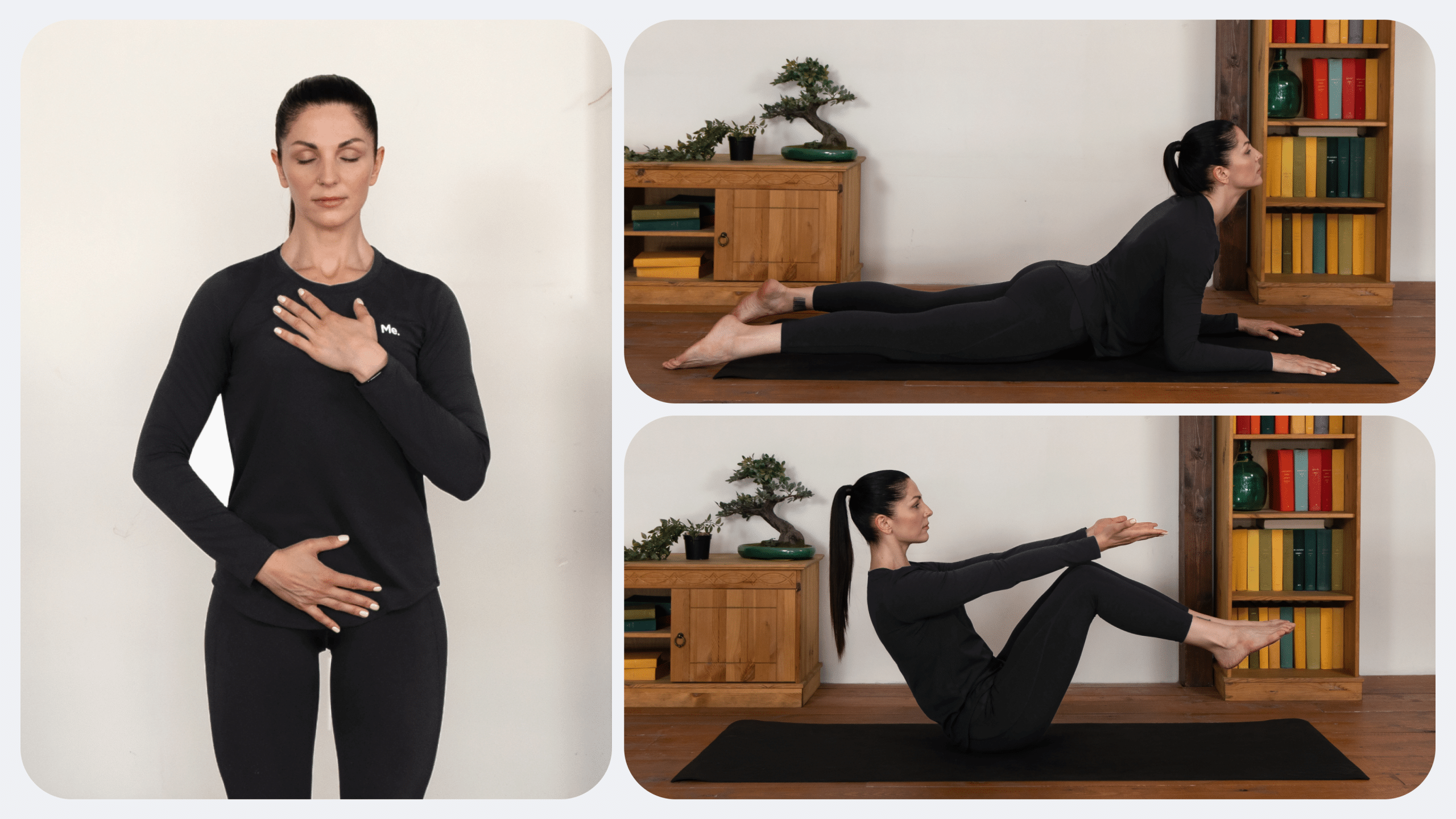Most people find stretch marks unsightly—especially when they show up on normally concealed areas like the inner thighs. Although their appearance may cause some anxiety, stretch marks are actually harmless—and extremely common.
In fact, an estimated 80 percent of all people have stretch marks, according to a study published in the American Journal of Dermatology (4). And while they can occur at any age, they’re most likely to develop during puberty, pregnancy, or any other time when your body is growing rapidly.
Stretch marks are actually scars that form when the skin stretches or shrinks quickly. When the skin stretches too far, too fast, the collagen and elastin in the skin tear. As the skin heals, these tears form scars, which show up as stretch marks.
Stretch marks usually first appear as red or purple streaks in the skin. Over time, they usually turn a lighter color, eventually fading to a nearly white hue. They tend to be most visible on parts of the body where there is a lot of fat, such as the thighs, buttocks, and stomach.
If you’re looking to get rid of your stretch marks, there are a number of options available to you. However, it’s important to keep in mind that stretch marks are permanent—meaning they will never completely disappear. With that said, there are treatments that can significantly reduce their appearance.
Why Do I Have Stretch Marks On My Inner Thigh?
There are several reasons why the inner thighs are prone to developing stretch marks. One of the main reasons is that the skin on the inner thighs is thinner and more delicate than the skin on other parts of the body.
This makes it more susceptible to tearing and stretching, which can lead to the formation of stretch marks.
Another reason why the inner thighs are prone to developing stretch marks is that they are a common site of weight gain (2). When the body gains weight, the skin stretches to accommodate the increased size. This stretching can cause the formation of stretch marks.
Weight gain is not the only reason why the inner thighs are prone to developing stretch marks. Other causes include:
Pregnancy: Pregnancy is a common cause of inner thigh stretch marks. This is because the skin on the inner thighs stretches to accommodate the growing fetus (2).
Puberty: During puberty, the body undergoes a number of changes that can cause the formation of stretch marks. These changes include an increase in hormone levels and an increase in body size (2).
Read More: Static Stretches: The Five Must Haves In Your Stretching Routine
Genetics: Some people are more susceptible to developing stretch marks than others. This susceptibility is believed to be due to genetics.
Weight lifting: As your muscles grow, they can cause the skin to stretch and tear, resulting in the formation of stretch marks.
Some medical conditions are also linked to the appearance of inner thigh stretch marks. These conditions include:
Hormonal imbalance: An imbalance of hormones such as estrogen and cortisol can cause the skin to become thin and fragile. This makes it more susceptible to stretching and tearing, which can lead to the formation of stretch marks (4).
Cushing’s syndrome: This condition is characterized by an overproduction of the hormone cortisol. Cortisol can weaken the skin and make it more susceptible to stretching and tearing (1).
Marfan syndrome: This condition is characterized by a defect in the connective tissue. This defect can cause the skin to stretch and tear, leading to the formation of stretch marks (2).
Corticosteroid creams: These creams can weaken the skin and make it more susceptible to stretching and tearing.
Steroid use: Steroids are hormones that can be taken orally or injected. They can cause the skin to stretch and tear, leading to the formation of stretch marks (3).
Are The Purple Stretch Marks On My Inner Thighs Harmful?
The color of your stretch marks can clue you in on how old they are. “Fresh” ones are usually reddish or purple, because that’s the color of blood when it’s close to the surface of your skin. After a few weeks or months, they might turn white or silver.
An inflamed stretch mark is nothing to worry about, but if you have any sort of rash or other skin changes in the area, see a doctor to rule out anything serious.
As for the pain, some people do report that their stretch marks are itchy, especially when they’re new. The itch can range from mild to intense, and it might even interfere with your sleep.If you’re dealing with itchy stretch marks, try not to scratch them. This can make the irritation worse and might even lead to an infection. Instead, apply a moisturizer or lotion to the area. This can help soothe the itch and keep your skin hydrated.
You can also try using a cold compress or taking an oatmeal bath. These home remedies can help relieve the itch and make you feel more comfortable.
If your stretch marks are painful, they might be deep tissue scars called striae distensae. These are more common in people who are overweight or have a large body mass index (BMI). Striae distensae can be painful, but they don’t usually cause any long-term damage.
If you’re dealing with pain from your stretch marks, talk to your doctor about treatment options. They might recommend over-the-counter pain relievers or prescription creams or ointments.
In most cases, stretch marks are harmless and don’t require treatment. But if you’re concerned about the way they look or you’re experiencing pain, talk to your doctor. They can help you determine whether you need treatment and, if so, what kind of treatment is best for you.
If you wish to cinch your waist, tone up your bat wings, blast away the muffin top – our fitness app was created to cater to all your needs! BetterMe won’t give excess weight a chance!
How To Get Rid Of Inner Thigh Stretch Marks?
There are several options that may reduce the appearance of inner thigh stretch marks. Note that some of these treatments may require multiple sessions to achieve desired results. Permanently getting rid of inner thigh stretch marks may not be possible.
1. Medical Treatments
A dermatologist can offer the following treatments to improve the appearance of inner thigh stretch marks:
Microdermabrasion
This is a skin resurfacing technique that uses a fine sanding tool to remove the outer layer of skin. This can help diminish the appearance of stretch marks by evening out the skin’s surface (3).
Chemical Peel
A chemical peel uses a solution to remove the damaged outer layer of skin, revealing new skin beneath. This may help improve the appearance of inner thigh stretch marks (3).
Laser Therapy
Laser therapy involves using focused light energy to break down scar tissue and stimulate collagen production (3). This can help improve the appearance of stretch marks by making them less visible and making the skin around them smoother.
Pulsed dye laser therapy is one type of laser therapy that has been shown to be effective in the treatment of stretch marks.
Fractional laser therapy uses a laser to create tiny wounds in the skin. This triggers the body’s healing response, which can help improve the appearance of stretch marks by making them less visible and making the skin around them smoother.
Excimer laser therapy is another type of laser therapy that uses ultraviolet light to break down scar tissue. This can help improve the appearance of inner thigh stretch marks.
Radiofrequency Therapy
Radiofrequency therapy uses radio waves to heat the skin and promote collagen production. This can help improve the appearance of inner thigh stretch marks by making them less visible and making the skin around them smoother (3).
Read More: Pulled Hamstring Stretches That Will Put The Pep In Your Step – Literally
2. Home Remedies
There are several home remedies that may help improve the appearance of inner thigh stretch marks, though there is little scientific evidence to support their use. Some people may find relief with home remedies when used in combination with medical treatments.
The following ingredients may help improve the appearance of stretch marks when used topically:
- Tretinoin – a topical retinoid that can help improve the appearance of stretch marks by stimulating collagen production
- Hyaluronic acid – a substance that helps keep skin hydrated and plump
- Glycolic acid – an alpha-hydroxy acid that can help exfoliate the skin and improve the appearance of stretch marks
- Collagen boosters – substances that can help stimulate collagen production, such as vitamin C
- Centella asiatica – an herb that is sometimes used in topical treatments for stretch marks
3. Prevention
There is no guaranteed way to prevent inner thigh stretch marks. However, some people may be able to reduce their risk by:
Taking Care of Your Skin
Having a skin care routine can help keep the skin supple and healthy. It includes:
Exfoliating
Exfoliating the skin helps remove dead skin cells and can promote collagen production. It’s done with a brush, scrub, or chemical exfoliant.
Moisturizing
Moisturized skin is less likely to tear when it stretches, which may help reduce the risk of stretch marks. A person can keep their skin hydrated by using a moisturizer regularly, especially after bathing.
Using Sunscreen
Sun damage can make stretch marks more visible. Wearing sunscreen with an SPF of 30 or higher can help protect the skin from the sun’s harmful rays.
Eating A Healthy Diet
Eating a diet that is rich in vitamins and minerals can help keep the skin healthy. Foods that are good for the skin include:
- water-rich fruits and vegetables, such as watermelon, tomatoes, and cucumbers
- fatty fish, such as salmon, mackerel, and tuna that are rich in omega-3 fatty acids
- avocados, which are rich in healthy fats
- nuts and seeds, such as almonds and pumpkin seeds that are rich in zinc and vitamin E
Avoid Sudden Weight Gain Or Loss
Sudden weight gain or loss can increase the risk of developing stretch marks. So, it’s important to maintain a healthy weight and avoid crash dieting.
If you are pregnant, try to gain the recommended amount of weight. This can help reduce the risk of developing stretch marks.
Hydrating
Drinking enough water can help keep the skin hydrated and less likely to tear when it stretches. A person should aim to drink eight glasses of water a day.
If you are sweating a lot, such as during exercise, you may need to drink more water to stay hydrated.
BetterMe is your fast-track ticket to a long-lasting weight loss! Tailor your fitness journey and maximize your results with just a couple of swipes!
When To See A Doctor
Most inner thigh stretch marks will eventually fade on their own. However, some people may want to see a doctor for treatment options if the stretch marks are particularly bothersome.
A person should see a doctor if they have stretch marks that:
- are severe
- cover a large area of the skin
- have changed color or become darker over time
- are causing them pain or itchiness
- are affecting their self-esteem or quality of life
The Bottom Line
Inner thigh stretch marks are common, especially in women. They are usually harmless and will eventually fade on their own. However, some people may want to see a doctor for treatment options if the stretch marks are particularly bothersome.
There are several home remedies that may help improve the appearance of inner thigh stretch marks, though there is no guaranteed way to prevent them.
Get your personalized
meal plan!
DISCLAIMER:
This article is intended for general informational purposes only and does not serve to address individual circumstances. It is not a substitute for professional advice or help and should not be relied on for making any kind of decision-making. Any action taken as a direct or indirect result of the information in this article is entirely at your own risk and is your sole responsibility.
BetterMe, its content staff, and its medical advisors accept no responsibility for inaccuracies, errors, misstatements, inconsistencies, or omissions and specifically disclaim any liability, loss or risk, personal, professional or otherwise, which may be incurred as a consequence, directly or indirectly, of the use and/or application of any content.
You should always seek the advice of your physician or other qualified health provider with any questions you may have regarding a medical condition or your specific situation. Never disregard professional medical advice or delay seeking it because of BetterMe content. If you suspect or think you may have a medical emergency, call your doctor.
SOURCES:
- Cushing syndrome (2021, mayoclinic.org)
- Marfan syndrome (2022, mayoclinic,org)
- Stretch Marks (2022, clevelandclinic.org)
- STRETCH MARKS: WHY THEY APPEAR AND HOW TO GET RID OF THEM (n.d., aad.org)



















